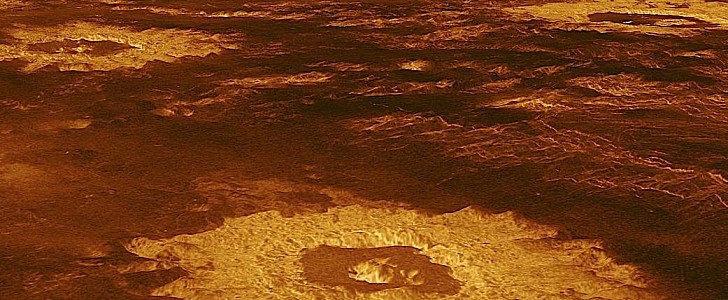If you’ve been watching our coverage of space-related stuff, then you know we’ve made a habit of presenting on a constant basis stills of neighboring Mars, as captured by the HiRISE orbital camera. We do this out of the firm belief that sometime soon, maybe even during our lifetime, human beings will actually get to experience those sights firsthand, and would be useful for the rest of us to know what they’re getting themselves into.
Mars has long been considered a prime target for our space exploration efforts, not because it’s a sister planet to Earth (that title goes to another ball of rock), but because it’s the only one in the solar system that could support human life with just a touch of technological effort.
Generally, the images of Mars captured by HiRISE are just like the planet itself, reddish and mysterious, and so is the one we have here, so you’re excused if you believed this is just another HiRISE photo story. But what you’re looking at here is not Mars, but Earth’s true sister planet, Venus.
About the same age as Earth, similar in size, features and chemical composition, Venus is believed to have once be home to water, stable temperatures, and why not, we dare even believe, life. Then, something, we don’t know what, happened, and led to the massive release of carbon dioxide from rocks, and Venus became hell.
The image we have here is the perfect representation of that hell. Captured by the Magellan mission which launched in 1989, it shows something NASA calls a crater farm, a region of the planet holding three large impact craters, clustered together in a region called Lavinia Planitia.
The region is a deformed lowland filled with volcanic deposits, and believed to have experienced severe mantle downwelling, a relatively common phenomenon over on Venus.
What this image proves, according to scientists looking at the place, is that “volcanic activity […] somehow stopped while the planet got covered up with craters.“ Why that is so, is anybody’s guess.
Generally, the images of Mars captured by HiRISE are just like the planet itself, reddish and mysterious, and so is the one we have here, so you’re excused if you believed this is just another HiRISE photo story. But what you’re looking at here is not Mars, but Earth’s true sister planet, Venus.
About the same age as Earth, similar in size, features and chemical composition, Venus is believed to have once be home to water, stable temperatures, and why not, we dare even believe, life. Then, something, we don’t know what, happened, and led to the massive release of carbon dioxide from rocks, and Venus became hell.
The image we have here is the perfect representation of that hell. Captured by the Magellan mission which launched in 1989, it shows something NASA calls a crater farm, a region of the planet holding three large impact craters, clustered together in a region called Lavinia Planitia.
The region is a deformed lowland filled with volcanic deposits, and believed to have experienced severe mantle downwelling, a relatively common phenomenon over on Venus.
What this image proves, according to scientists looking at the place, is that “volcanic activity […] somehow stopped while the planet got covered up with craters.“ Why that is so, is anybody’s guess.






